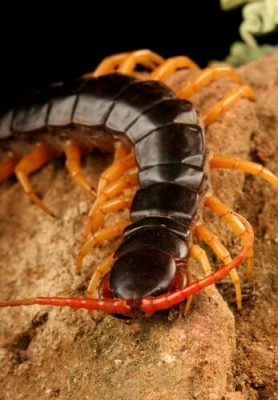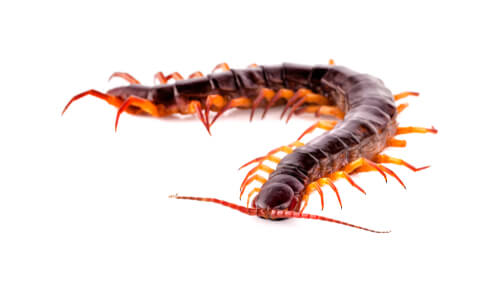Centipede or Millipede – The Smallest Differences: Many times we will have seen arthropods with more legs than we can count with the naked eye. A centipede! We automatically exclaim. The truth is that a passionate range of non-insect arthropods is mistakenly classified as “centipede”, when at bottom they are not.
Here we teach you to differentiate them, because one of the two can be dangerous for the human being.
The order of the myriapods
While centipedes and millipedes have many differentiating characteristics, both are cataloged within the subphile Myriapoda. Surprising as it may seem, this subphylum features other less well-known arthropods than those previously named. In total it includes four classes:
- Chilopoda: It includes the centipedes themselves.
- Diplopoda: Millipedes.
- Symphyla: Syphilids, very rare semi-transparent body elongated arthropods.
- Pauropoda: Pauropods, tiny and very soft-bodied.
Once the different types of myriapods existing on our planet are distinguished, Let’s learn to clearly and easily differentiate a centipede from a millipede, the most representative of the subphylum.
How are they alike?

These two classes of arthropods can easily be confused in the eyes of an inexperienced person, since both have an elongated body, many legs, and are of fossor habits (they live in the ground and dig). Morphologically they have other more complex similarities:
- Both present a head with antennas, which have characteristic sensory structures, the organs of Tomosvary, whose function is still unknown, although its role is believed to be the chemical detection of substances.
- Both centipedes and millipedes have a cuirass, made up of a cuticle with a greater or lesser degree of sclerotization.
- They are segmented animals, that is, present different repetitions of the same ring-shaped structure that make up your body.
- They are dioecious (there are males and females) and oviparous.
As far as behavior is concerned, both millipedes and centipedes are of lucifugal and hydrophilic habits, that is, they love humid and dark places.
The similarities are many, but also the differences. We go further: it is necessary to know how to distinguish them centipedes can pose a danger to human health.
What is the difference between them?
The most evident differentiating key has been under our eyes all this time, because its name gives it away:
- Centipedes have one pair of legs in each segment, while millipedes, starting from the fifth segment, present two pairs. This gives them many more limbs than their peers, which gives them their name. Centipedes generally also have fewer body segments.
But this is not the only difference. Centipedes are excellent predators, while millipedes often feed on fallen leaves and decaying fruits. This has given them Very interesting morphological and behavioral differences:
- Millipedes are slow and leisurely in nature. When they feel threatened, they choose to roll up on themselves or expel foul-smelling substances to chase away their predators: are the concept of pacifism made animal.
- Centipedes, on the other hand, are predators equipped for hunting. They are extremely fast, and have powerful jaws with poisonous glands to paralyze their prey. Scolopendra comes to mind, which, when viewed closely, gives the least respect.
It is important to emphasize that the bite of centipedes in general is not fatal, but it is described as very painful for humans. So it is essential to leave a centipede alone if we see it in the wild, and if it sneaks into our homes, handle it with tweezers without ever touching it directly.

Thus, we have learned to unequivocally differentiate a millipede from a centipede, since the latter can pose a danger to humans if they get too close.
Despite this, they are both fascinating creatures who deserve respect and admiration.
